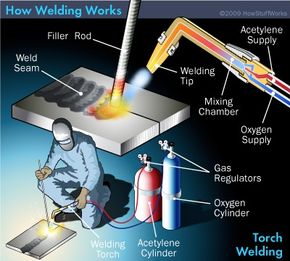Maximizing Your Welding WPS: Methods for Improved Efficiency and Effectiveness
Maximizing Your Welding WPS: Methods for Improved Efficiency and Effectiveness
Blog Article
Grasping Welding WPS Criteria: Best Practices and Techniques for Quality Welds
In the realm of welding, grasping Welding Procedure Requirements (WPS) standards is an essential element that directly affects the quality and integrity of welds. Abiding by these requirements makes certain consistency and dependability in welding end results. Nonetheless, achieving quality in welds exceeds merely understanding the standards; it entails carrying out best methods and methods that elevate the craft to a level of accuracy and skill that establishes apart the average from the phenomenal. As we browse through the details of welding WPS criteria, discovering key understandings and techniques for achieving top-tier welds will be paramount for welders seeking to excel in their craft and produce welds that stand the test of time.
Understanding Welding WPS Requirements

Comprehending WPS requirements is essential for designers, welders, and inspectors associated with welding operations. By following WPS standards, welders can generate welds that fulfill the required mechanical residential properties and architectural honesty. Assessors count on WPS documentation to verify that welding procedures are being complied with correctly which the resulting welds are of premium quality. Designers use WPS criteria to design welding treatments that make sure the toughness and dependability of bonded frameworks.


Important Tools for Top Quality Welds
Mastering welding WPS standards is vital for welders to successfully utilize the vital tools needed for generating top quality welds. Among one of the most essential tools for high quality welds is a welding maker. The kind of welding machine needed relies on the welding process being used, such as MIG, TIG, or stick welding. Welding headgears are also indispensable to shield the welder's eyes and face from sparks, heat, and UV radiation. Additionally, welding gloves made of heat-resistant and sturdy materials guard the hands from burns and injuries. Magnets and clamps help hold the work surfaces with each other safely during the welding process, guaranteeing accurate and exact welds. Wire brushes and cracking hammers are vital for cleaning the weld joint before and after welding to eliminate any type of contaminations that can influence the quality of the weld. Last but not least, a determining tape and angle grinder are useful tools for making sure proper alignment and preparing the work surfaces for welding.
Key Strategies for Welding Success
To achieve welding success, one need to master the key strategies important for generating premium welds. One vital technique is maintaining the correct arc length. Keeping the electrode at the optimal distance from the work surface is important for developing solid, consistent welds. In addition, managing the traveling rate is vital. Moving as well quickly can cause insufficient penetration, while moving as well gradually can lead to extreme warmth input and possible defects. Appropriate manipulation of the electrode angle is another vital technique. The angle at which the electrode is held can influence the grain shape and infiltration of the weld. Furthermore, guaranteeing constant gun angle and direction of travel is necessary for harmony in the weld grain. Last but not least, keeping a secure welding and a steady hand setting her comment is here throughout the procedure is essential to accomplishing accuracy and uniformity in the welds. By mastering these essential strategies, welders can raise the top quality of their work and achieve welding success.
Ensuring Conformity With WPS Standards

Furthermore, keeping detailed documents of welding parameters, tools calibration, and assessment results is critical for showing compliance with WPS criteria. By diligently sticking to WPS requirements, welders can ensure that their work satisfies the needed top quality degrees and adds to the general success of the welding project.
Troubleshooting Common Welding Issues
When confronted with common welding issues, identifying the origin is important for reliable troubleshooting. One common problem is the presence of porosity in welds, often triggered by pollutants such as oil, corrosion, or dampness. To address this, guaranteeing appropriate cleansing of the base metal prior to welding and using the appropriate securing gas can considerably minimize porosity. Another concern frequently come across is lack of combination, where the weld fails to effectively bond his response with the base material. This can come from insufficient warm input or inappropriate welding technique. Changing criteria such as voltage, cable feed rate, or travel speed can assist boost fusion. Furthermore, distortion, fracturing, and spatter are common welding challenges that can be mitigated through correct joint prep work, regular heat control, and selecting the suitable welding consumables. By extensively comprehending these typical welding concerns and their origin, welders can efficiently fix issues and achieve top quality welds.
Final Thought
In final thought, mastering welding WPS criteria calls for a complete understanding of the standards, utilizing important tools, and applying essential methods for successful welds. read Guaranteeing conformity with WPS criteria is essential for creating quality welds and preventing typical welding problems. By adhering to finest strategies and techniques, welders can accomplish regular and reliable outcomes in their welding jobs.
In the realm of welding, understanding Welding Treatment Spec (WPS) standards is an important component that straight affects the top quality and stability of welds.When diving right into the realm of welding techniques, a critical aspect to comprehend is the relevance and ins and outs of Welding Procedure Spec (WPS) standards. WPS criteria supply an in-depth guideline for welding procedures, ensuring uniformity, quality, and security in the welding procedure. The kind of welding machine needed depends on the welding process being used, such as MIG, TIG, or stick welding.Accomplishing welding success through the proficiency of essential strategies requires a detailed understanding and adherence to Welding Procedure Requirements (WPS) requirements.
Report this page